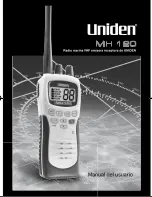
53SL ES Series Mobile Radio Operating Manual April 2009
6-15
DTMF / ANI Signaling
Section 6 - Conventional Mode Features
6.12.1 Single Tone Encoder
The radio will transmit and send a single tone as programmed in PC Configure. Single
tone ANI provides call-in signaling, but does not provide identification of individual units,
i.e. all units use the same single tone. Generally 1050 Hz is used for single tone RTT, but
the radios and decoders must be programmable to other tones in the audio range. All tones
must have a +/-0.2% frequency stability, and the tone length must be programmable to a
pre-determined period of time from 0.5 to 2.5 seconds, in increments of 100 ms or less.
To use the single tone encoder functionality, program the radio with RTT with Single
Tone Encoder selected as the type of RTT. The radio transmits and sends a tone of the
programmed frequency and duration. When the tone is sent, all other radios on the system
will hear the tone transmitted, and need to open audio.
6.12.2 Five Tone Encoder
The radio transmits five tones. The first four tones are the Five Tone ID of the radio. The
last tone is based on the radio mode (Normal Call, Emergency Call, Secure Call).
6.12.3 MDC1200 Compatibility
MDC1200 is a signaling protocol designed and implemented by Motorola for analog
channels only. The following features of this protocol are supported. Either MDC1200 or
standard DTMF ANI/Emergency signaling can be programmed on each conventional
system.
Note
This feature is hardware dependent and therefore cannot be added to others by upgrading
firmware).
MDC1200 ANI
- Both pre and post ANI are supported.
MDC1200 Emergency Alert
- A retry counter is implemented. Currently, ACKs are
not decoded so the radio retrys the programmed number of times with each emergency.
Inhibit/Uninhibit Commands
- Commands to inhibit (disable) and uninhibit (enable)
mobile access to the radio system.
















































